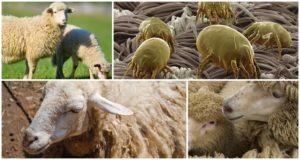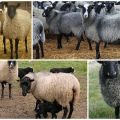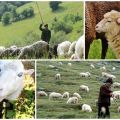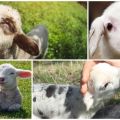What to do if a lamb has a swollen belly and what are the reasons, treatment of tympania
Raising sheep is difficult, even for an experienced farmer. Ruminants have a very sensitive digestive system to changes, so any little thing in feeding can lead to serious consequences. Often, the owners of cattle farms do not know what to do if the lamb has a swollen belly. Do not delay solving this problem, and then you can easily save the sheep from death.
Main reasons
Most often, a swollen lamb's belly is a sign of tympanic scarring. The rumen is one of the sections of the stomach of ruminants. It is in the rumen that the main processes of food digestion take place. This section contains many beneficial bacteria, which release small amounts of gases during the digestion of food. Normally, gases are excreted naturally and do not harm the animal.
Unsuitable food can cause profuse gas formation, which significantly stretches the organ in size. The pressure on the walls stimulates severe acute pain, so the animal is lethargic, lethargic, refuses food and water. Characterized by a tense, unnatural posture with a bent back, excessive anxiety. The membranes of the nose and eyes may overflow with blood and the gait may become wobbly and unsteady.
Typically, the condition is caused by feeding large amounts of high protein foods such as alfalfa or clover. The same problem occurs after giving tops of potatoes, beets or apples, cabbage, which easily ferment in the stomach with the formation of gas. Grass moistened with dew or rain also tends to ferment, so it is not recommended to graze sheep in the early morning, immediately after rain or in swampy areas.
How does it manifest?
Bloating is easy to see with the naked eye. Both sides or the side on the left side are greatly increased in size. The animal breathes heavily, refuses food and feed, may lie motionless or reluctant to move.
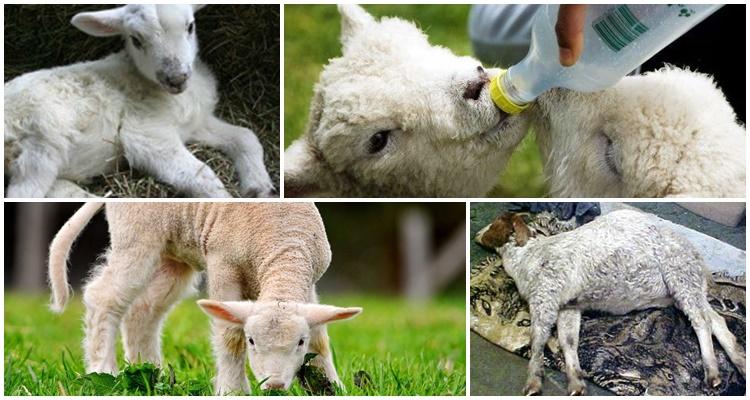
A sharp refusal to feed and a serious condition of the animal are caused by an acute swelling of the rumen. Chronic bloating is only accompanied by a slight increase in flank size, and is usually caused by minor irregularities in feeding technology.
What to do if a lamb has a swollen belly
Acute tympanic scarring requires immediate treatment, otherwise the lamb can easily suffocate. To treat sheep, it is necessary to remove excess gas from the stomach as soon as possible. It is necessary to place the lamb so that the upper half of the body is higher than the lower one, and gently massage the left side. If the lamb can move, it makes sense to drive it up the mountain and lower it several times - active upward movement stimulates the release of gas.
In extreme cases, the veterinarian uses a trocar to pierce the lamb's scar wall. The puncture must be made in a strictly defined place - a hungry fossa, exactly in the middle between the hip joint (hip joint) and the last rib of the lamb. This procedure cannot be performed by an unprepared person, so it makes sense to call a veterinarian immediately after the onset of the disease. If everything went well, the tube is left at the puncture site for a while so that the gas can escape. In this case, the trocar is held with the thumb.
After removing the tube from the wound, the puncture site must be disinfected with iodine. The sheep are observed for several hours. If the condition is satisfactory, she can be released into the general box. But feeding with concentrates and, in particular, lush green grass should be limited to a minimum, at least for a couple of weeks.
Problem prevention
To avoid bloating in lambs, it is necessary to carefully select the diet for both young and adult sheep. It is not allowed to graze animals on swampy pastures or in areas with abundant dew formation. If it rains heavily, it is advisable to drive the herd indoors and only after the site dries out, release them to the field again.
In autumn and spring, sheep are gradually transferred to new feed. At first, it is allowed to give green grass for 15-20 minutes a day, and then the time is gradually increased to several hours.
Do not feed leftovers from the table or peel to lambs, including potato, eggplant, beetroot. It is necessary to regularly review the diet of sheep, counting the content of dry and succulent feed. It is better if a certified zootechnician does this.




